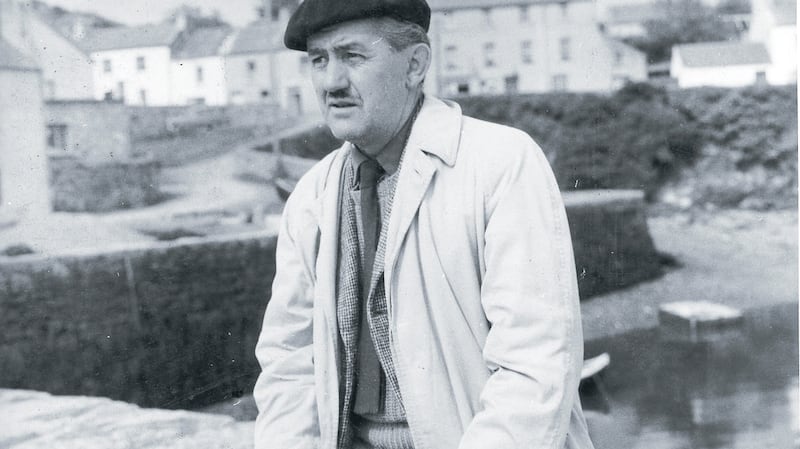If you happen to be driving eastwards from Malaga along the Costa del Sol this summer, and you’re not in any particular hurry, you could do worse than turn on to Avenida Cerrado Calderón and check out the roundabout that marks the junction with Calle Flamenco and Calle Andaluz.
You might even give yourself a celebratory couple of spins around it. Because although it’s just another roundabout, it bears the name Glorieta Jorge Campbell, and that makes it a bit special.
This year marks the 100th anniversary of the birth of George Campbell on June 29th, 1917. An Irish painter who fell in love with Spain in the 1950s, he escaped many Irish winters by heading to the pretty fishing village of Pedregalejo, now a hip seaside suburb, to paint abstract scenes inspired by the landscape and people of Ireland and Spain.

If you’re a little sceptical about the aesthetic value of a commemorative roundabout, don’t be. This, after all, is Malaga. It’s visual art heaven. Apart from the Picasso Museum, Picasso’s house (also a museum) and the Museum of Contemporary Art, it’s home to the Carmen Thyssen Museum, the Russian Museum – which exhibits items on loan from its big sister, The Hermitage in St Petersburg – and a pop-up Pompidou Centre in the shape of the Cube, a futuristic white building topped with a glass box.
It must have been a rather different city when Campbell first arrived. Born in Arklow, Co Wicklow, he went to school in Dublin; he and his brothers then moved to Belfast to live with his widowed mother. At the time of the Belfast Blitz he was working in an aircraft factory, and began to paint, taking the devastating bomb damage as his subject.
Gradually he became involved in the arts scene and founded the Irish Exhibition of Living Art in 1943. The following year, with his brother Arthur, he published Now in Ulster, an anthology of short stories, essays and poetry by young Northern writers. He also developed a close friendship with another self-taught Belfast artist, Gerard Dillon, with whom he often travelled to Connemara on painting trips. As outgoing as Dillon was shy, Campbell was a fine musician who would later become an accomplished flamenco guitarist.
In the 1960s Campbell was a well-known artist, a member of the Royal Hibernian Academy and winner of many prestigious awards including the Douglas Hyde Gold Medal in 1966 and the Oireachtas Prize for Landscape in 1969. He designed stained- glass windows for Galway Cathedral and many other churches around the country.
Neglected figure
At the height of the Irish art boom, his abstract cityscape Dublin On A Showery Day made an impressive €65,000 at Adam's; those days are long gone, but although Campbell is a neglected figure compared with his friend Dillon, his work is still popular. At a sale of Irish and international art at Whyte's in May, his tiny watercolour painting Women Mending Nets, Tarragona, Spain, sold for €1,500 – well above its estimate of €800 to €1,200 – while an ink drawing of Clifden, Co Galway, fetched a healthy €900.
Campbell’s connection with Spain was first recognised in 1978, when he was made a Commander of the Order of Merito Civile – a proper knighthood – and Malaga City Council celebrated his life and work in 2006 by dedicating the sparkling new roundabout in his name.
This, in turn, inspired Arklow Municipal District to put up a plaque at St Patrick’s Terrace, marking his birthplace. “It is only fitting,” Cllr Pat Kennedy said, “that George is now remembered in the place of his birth. The plaque unveiled here today will serve as a testament to his life’s work and all those who visit will be reminded of his artistic passion and creative courage that is showcased so well in his works.”
Absolutely. But you can’t help having a sneaky suspicion that if Campbell’s spirit is dancing for joy, it’s dancing around Glorieta Jorge Campbell, under that glorious blue Mediterranean sky.
- If you know of an Irish connection that would interest readers of this column, please email awallace@irishtimes.com with details of the story, as well as your contact address
















